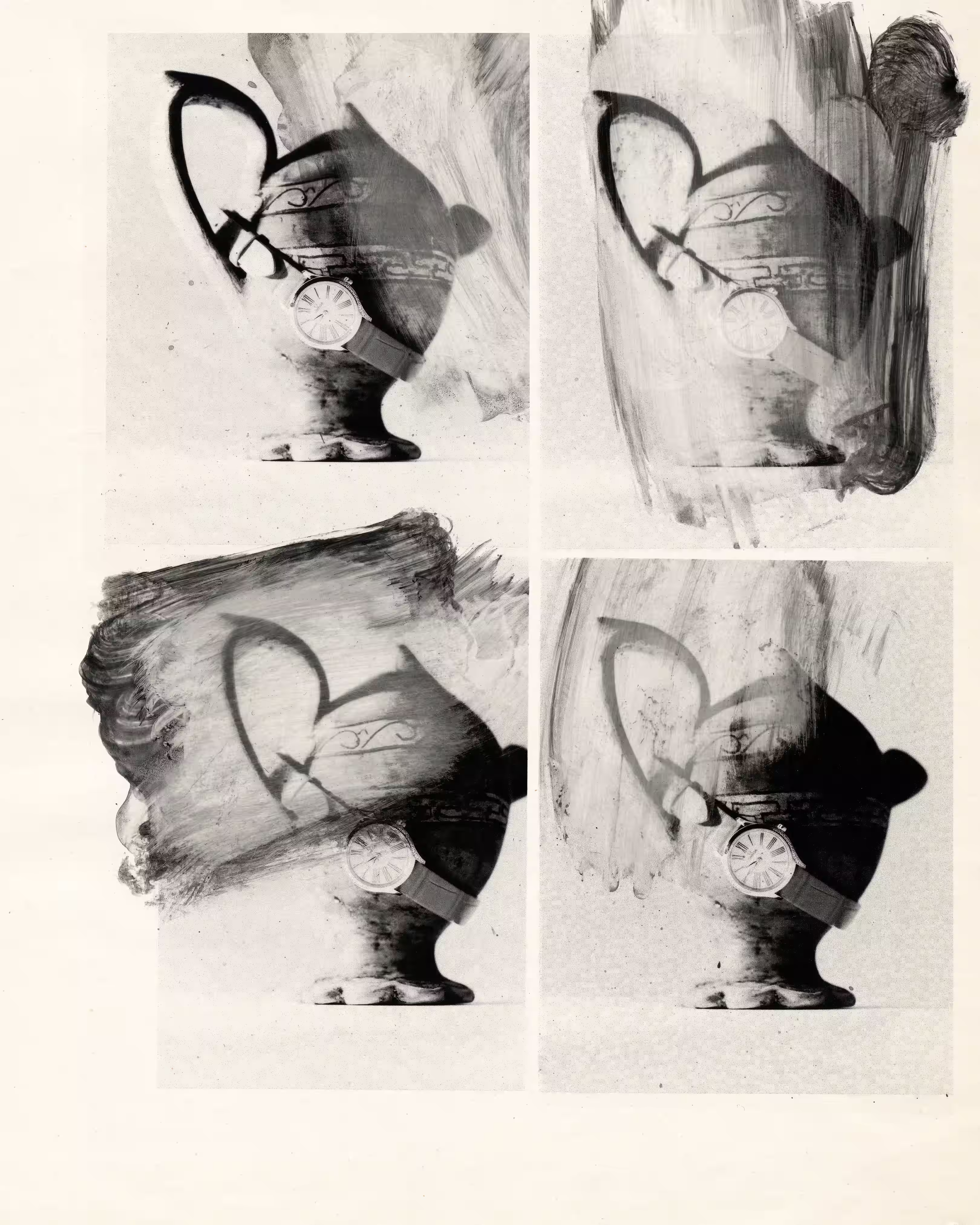.avif)
My generation was raised by many rules, especially when it came to dressing, but much was still possible away from the public eye, outside of the grown-up social scene and inside our tight and secretive tribes.
I wonder how it must feel to be growing up right now online, where everyone is always on view with no place and no time to hide, always judged and always aware of being included or excluded. In this dictatorship of social performance, who does one choose to be, much less decide what to wear?
Of course, I didn’t always have a choice: I remember my discomfort in being forced to wear the fashionable clothing that my mother bought me and my sister Isabella when we were children. My mother was an early adopter and an influencer in her own right. She would look at the glossy magazines and take us to shop at the trendiest children’s boutiques in Florence, where clothes would arrive straight from Paris and London. There, nothing was too extreme, but everything was ahead of the times.
In these years, my sister was the local attraction. Isabella combined my family’s obsession with trends and her own original tailoring talent. She made her own clothes from age 10 and wore them at 7 a.m. to the school bus stop. Mothers would wake up and get to their windows to see what kind of clothes she had on each day. Later, she was picked up on the street by Elio Fiorucci because of what she was wearing and became a fashion designer, working for Romeo Gigli, Miuccia Prada, and Calvin Klein. To this day, Isabella still has quite weird and original taste.
Thanks to my mother, I, too, was a sight. I was the first in my school to wear high-waisted bell-bottom pants, tight striped T-shirts, and a fabulous blue double-breasted, patent leather peacoat. Some of my classmates would say unpleasant things about these sartorial decisions and call me names. I felt very exposed to their judgment, but the school’s corridors were where it ended. There were no Instagram posts, no TikTok videos, no shared images with hearts or thumbs up or down options—no way to know what people really thought after the day finished. When evening finally came, my friends and I would leave our homes in one outfit, something family-approved, get into town, squeeze in a public bathroom, and change into another. As we peeled off our layers of clothing and identities, we became what we wanted to be and showed it to whom we wanted to see it.
I do not envy today’s digital landscape where accessibility and publicity has eroded important aspects of self-discovery. As a father of two teenage girls now, I do understand the value of knowing where my kids are, but is it any good to follow them to parties or to see them on Instagram, judged and exposed? Adolescence, after all, is a time in which many of us are still using clothing as masks and props to discover who we are. These modern freedoms of expression are not actually freedoms so much as they are restraints that have pushed everybody in a new kind of aspirational closet—the influencer’s closet—where everybody is asked to conform to performativity. Now every new trend becomes a global phenomenon with the click of a button. On social media feeds, the underground is immediately mainstream in a continuous and unstoppable sequence of outfit pictures and selfies. What should be a celebration of individuality and self-expression has put immense pressure on young people to perform a role and wear a uniform. Sharing, such a beautiful gesture, has become about conforming to the majority and suppressing personal expression.
Growing up and searching for one’s identity and personal style is always a painful and difficult time in life. Sometimes it never ends, and we keep looking and suffering. Many of us had the luxury of doing it behind closed doors and offline. Our children, who all dream of becoming some kind of celebrity, are doing it, as celebrities do, in the public eye and on the screens of their phones. Yet it hurts more than ever, and it is dangerous like never before.











.avif)








.avif)


_result_result.avif)



.avif)

_result_result.avif)

_result_result.avif)
.avif)

_result_result.avif)


_result_result.avif)


.avif)




.webp)

.avif)



















%20(1).avif)
.avif)




.avif)
















.avif)


.avif)





















.jpeg)

.avif)

_11%20x%2014%20inches%20(2).jpg)







.avif)

.jpg)

%20(1).jpg)
.avif)
.jpg)

.jpg)
.webp)


.webp)



.webp)


.webp)


.avif)









.avif)
.avif)

















.avif)









.avif)



.avif)




















-min_result.avif)









.avif)







3_result.avif)
_result.avif)






_result.avif)




.avif)




.avif)













.avif)

.avif)











.avif)

.avif)










.avif)



.avif)


_result_result.avif)
















-min_result.avif)






.avif)
.jpg)
















_result.avif)

.avif)


.avif)







.avif)





.avif)

_result.avif)



.avif)















.avif)









.avif)


.avif)














.avif)




.avif)








.avif)

.avif)

.avif)



.avif)


.avif)




.avif)

.avif)

.avif)
.avif)
%20(1).avif)
.jpg)

%20(1).avif)








.avif)
.avif)

.avif)






.avif)



















.avif)
.avif)
